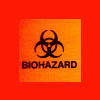|
|
Heart Transfer Area Semi-Batch Reactor
#1

Posted 13 March 2010 - 05:33 PM
Trying to calculate the power resulted from the reactor, we got it to generate approximately 3700 kW-hr per batch, appearing in the form of heat.
I was wondering if any of you can help me calculate the total heat transfer area required to remove those 3700 kW-hr of heat. I know there is somewhere a graph describing a correlation between total heat transfer area (x-axis) and kW-hr (y axis), and you can see different materials (stainless steel and etc).
Would any of you help me find this graph?
PS- no overall heat transfer coefficient is known (U).
#2

Posted 14 March 2010 - 11:03 AM
#3

Posted 16 March 2010 - 04:48 AM
What are the physical properties of the reaction mass as it progresses from raw materials to product, especially viscosity?
And mandatorily the state(Solids liquids Gases?;
what are conceptually the withholding/containment means.
Can this become run-away reaction or not
being semi-batch may mean addition&removal of reactants,products etc. etc.
#4

Posted 16 March 2010 - 08:51 AM
We are using a semi-batch reactor to produce a product with a ∆Hrxn of approximately -1360 kJ/mol.
Trying to calculate the power resulted from the reactor, we got it to generate approximately 3700 kW-hr per batch, appearing in the form of heat.
I was wondering if any of you can help me calculate the total heat transfer area required to remove those 3700 kW-hr of heat. I know there is somewhere a graph describing a correlation between total heat transfer area (x-axis) and kW-hr (y axis), and you can see different materials (stainless steel and etc).
Would any of you help me find this graph?
PS- no overall heat transfer coefficient is known (U).
I think of two possibilities... if it's a liquid product, you could use a gaseous quench directly to the reactor as it can be separated in a separator from the products.
Also you can use a cold jacket to your reactor because it seems you need to remove the heat for the reaction to proceed. Check heat transfer equipment in Perry's Chemical Engineer Handbook, there are some examples using coils and jackets. It doesn't seem to be necessary to design a heat exchanger at the exit of the reactor, but if it were that way, you could exchange the heat with other heat exchanging fluid as water and produce steam.
Similar Topics
Diked Area Around Distillation ColumnStarted by Guest_hysyshunter_* , 15 Apr 2024 |
|

|
||
Overall Heat Transfer CoefficientStarted by Guest_T_bag_* , 16 Apr 2024 |
|

|
||
Steam Pressure Requirements For Limpet Batch ReactorStarted by Guest_golegolegole_* , 10 Apr 2024 |
|

|
||
Falling Film Reactor Design CalculationStarted by Guest_Emranm02_* , 07 Apr 2024 |
|

|
||
Falling Film Sulfonating ReactorStarted by Guest_Emranm02_* , 07 Apr 2024 |
|

|

 FB
FB








